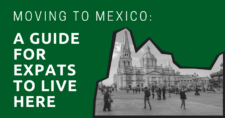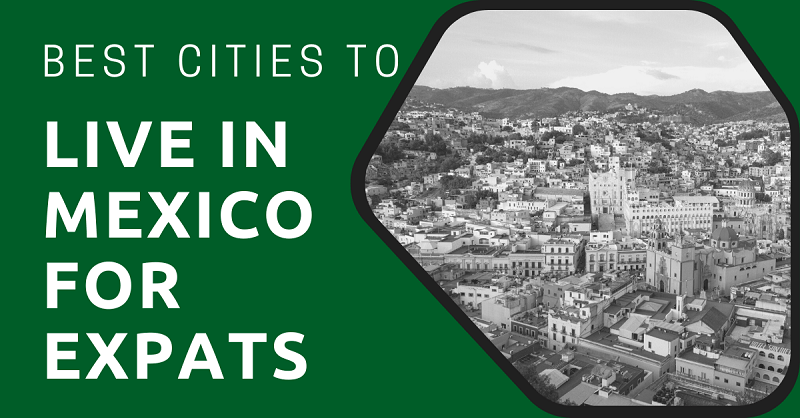
Mexico has some of the best cities in the world for expats looking to work or retire abroad. It also boasts beautiful beaches, majestic mountains, nature reserves, and metropolises.
But you may be struggling to pick which Mexican city is right for you. After all, there are so many to choose from.
That said, this guide covers the best Mexican cities that expats can call home, the cost of living in each, and what to expect as far as housing, food, and amenities.
This article will take approximately 22 minutes to read. Don't have the time right now? No worries. You can email the ad-free version of the article to yourself and read it later!
Disclaimer: This article may include links to products or services offered by ExpatDen’s partners, which give us commissions when you click on them. Although this may influence how they appear in the text, we only recommend solutions that we would use in your situation. Read more in our Advertising Disclosure.
Contents
Where Do Expats Live?
Mexico has a population of over 130 million people, 10 cities with over one million inhabitants, and 37 cities with over 500,000 inhabitants. So, narrowing down the best cities in the country is difficult to say the least.
However, the following places are the most expat-friendly and have some fantastic things going for them when compared to other Mexican cities.
Puerto Vallarta
Puerto Vallarta is a beachside city that is home to about 40,000 expats, or around 16 percent of the city’s population.
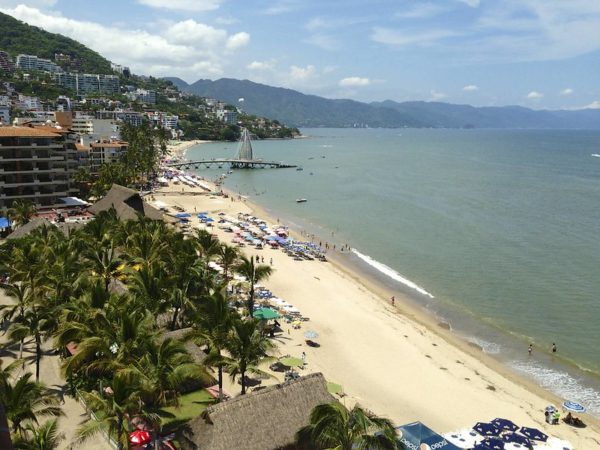
The city has excellent public transportation, lively nightlife, beautiful beaches, and sound infrastructure.
Why it’s a Top Choice: Best City for Expats Overall
Expats will find many comforts from back home in this small city, such as Walmart, Costco, and tons of imported products from the U.S. and Europe. This is the number one expat city in Mexico because living here is easy, laid back, fun, and safe.
Cost of Living
Puerto Vallarta is an extremely popular destination for tourists and expats and that’s reflected in the cost of living.
While the small city is generally a much cheaper place to live compared to some of the larger Mexican cities, due to the amount of tourism the city gets, many things can be more expensive.
In fact, a single expat can expect to pay US$800 to US$1,000 per month to live comfortably in Puerto Vallarta.
Job Opportunities
Puerto Vallarta is known as a digital nomad haven, so most of the expats living in the city are either retirees or remote workers.
That being said, due to the large population of expats, there is also a need for English speakers in hospitality and tourism.
There are also plenty of English teaching jobs in Puerto Vallarta.
Pros of Living in Puerto Vallarta
- The city has great infrastructure, new roads, public transportation, and wifi.
- Lots of expats living there make meeting like-minded people easy.
- No matter what part of the city you’re in, you’ll be near the beach.
- Great nightlife.
- Good choices for apartments and homes.
Cons of Living in Puerto Vallarta
- It can get scorching hot and humid, up to 100 degrees Fahrenheit and 100 percent humidity in summer.
- Some areas of the city are more expensive than other parts of Mexico.
- It can get very crowded in the high season as many tourists visit the city.
Los Cabos
Los Cabos is a region of Mexico at the very southern tip of the Baja Peninsula. The main tourist center of Los Cabos is Cabo San Lucas, a very tourist and expat-friendly city with over three million visitors per year.
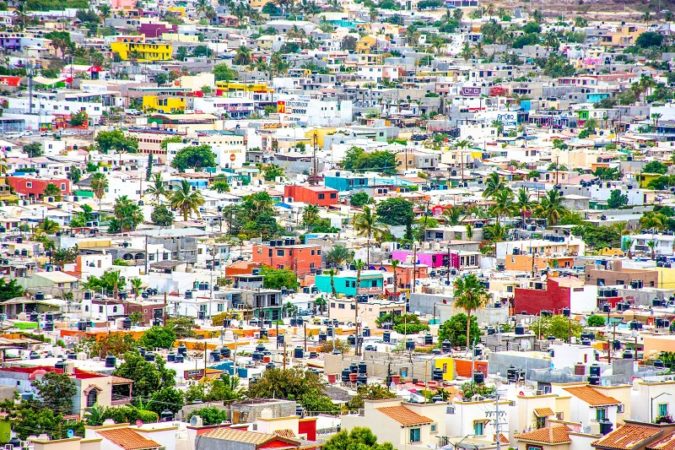
While it’s primarily a tourist city, many expats call Cabo San Lucas home.
Why it’s a Top Choice: Best City for Beach Bums
Most expats in Los Cabos live in San Jose del Cabo, the second largest city in the region and much quieter and less touristy than Cabo San Lucas.
Its proximity to the U.S., great weather, stunning beaches, and high standard of living makes Los Cabos a great place to live as an expat.
Cost of Living
Los Cabos is not the cheapest place to live in Mexico. The city is quite expensive compared to some of the other destinations on this list.
Because it’s essentially a touristy resort city, restaurant prices and transportation costs are hiked up. On the other hand, rent in Los Cabos is much cheaper on average than in Mexico City.
Another reason most expats live in San Jose del Cabo rather than Cabo San Lucas is the cost of living, as San Jose del Cabo is much cheaper.
For example, a one-bedroom apartment costs around US$600 in Cabo San Lucas, whereas the average is only around US$500 per month in San Jose del Cabo. A single expat needs a minimum of US$1,000 to US$1,500 per month to live comfortably in Los Cabos.
Job Opportunities
The most popular expat jobs in Los Cabos are in real estate, hospitality, and teaching English. Los Cabos has a substantial real estate market appealing to expat retirees and investors, so the need for English-speaking real estate agents is high.
Los Cabos also has countless resorts, so many expats who have experience working in the high-end hospitality field come to Cabo San Lucas to work in tourism.
As with anywhere in Mexico, another common profession for expats is teaching English. Mexico is a developing nation that has recently put lots of funding into English programs for children and adults.
As a result, there are many English teaching jobs all over the country, and since Los Cabos is a very touristy destination, there is a massive push for the local community to learn English.
The job market for expats is not the best in Los Cabos compared to other Mexican cities, though. There is a lot of competition, so if you’re looking for a Mexican company to sponsor your residency, I recommend looking elsewhere.
Pros of Living in Los Cabos
- Los Cabos is one of the safest places to live in Mexico.
- The weather is pleasant all year round, without temperature extremes and only mild seasonal changes.
- Fast Internet speeds.
Cons of Living in Los Cabos
- More expensive than other cities in Mexico.
- The traffic in the region, especially in Cabo San Lucas, can be horrible.
- The education system in Los Cabos is not as good as in other areas of the country, so if you plan to raise your kids here, you may need to look for international schools.
Merida
Merida is the capital and largest city in the Yucatan region of Mexico. Most tourists skip this vibrant city and go straight to Cancun, Tulum, or Playa del Carmen, which is a huge mistake.
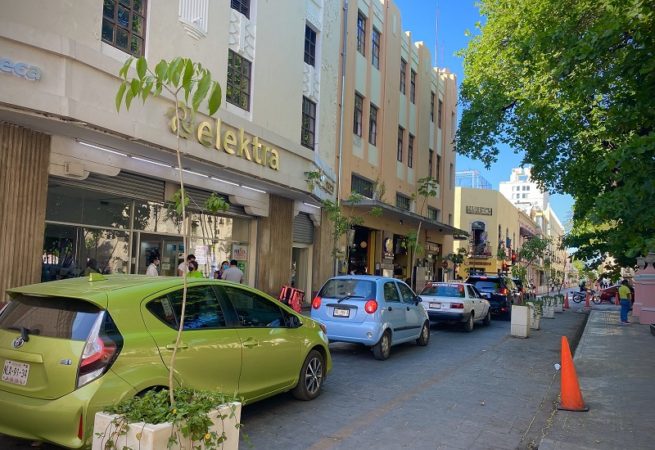
Merida has a lot to offer at an incredibly low price.
Why it’s a Top Choice: Cheapest City
Merida has a fascinating blend of cultures and food, and while it’s not directly on the beach, there are beautiful beaches and nature reserves nearby.
Cost of Living
Merida is considered the cheapest city in Mexico. And because it’s not the most touristy area, prices are lower in almost every category.
Expats looking to get more bang for their buck will adore Merida. You can find a comfortable one-bedroom apartment in the city center for less than US$600, and a single expat can easily live in Merida on less than US$1,000 per month.
Job Opportunities
About 11,000 U.S. and Canadian citizens live permanently in Merida, and the vast majority of the expats here are digital nomads or English teachers.
Since Merida doesn’t get many tourists compared to other regions in Mexico, there are not as many hospitality jobs for expats.
While it’s possible to work as a bartender, hotel receptionist, or English-speaking tour guide in Merida, these jobs are less common among expats.
Pros of Living in Merida
- Very low cost of living.
- Amazing blend of Mexican and Mayan culture.
- Nearby many beaches and tourist destinations.
- Very walkable city.
Cons of Living in Merida
- It can get scorching hot in Merida during the summer months.
- Limited flights to the Merida Airport.
- More difficult for expats who don’t speak Spanish.
Mexico City
Mexico City, or Cuidad De Mexico (CDMX), is not only the capital and largest city in Mexico but also one of the biggest cities in the world.
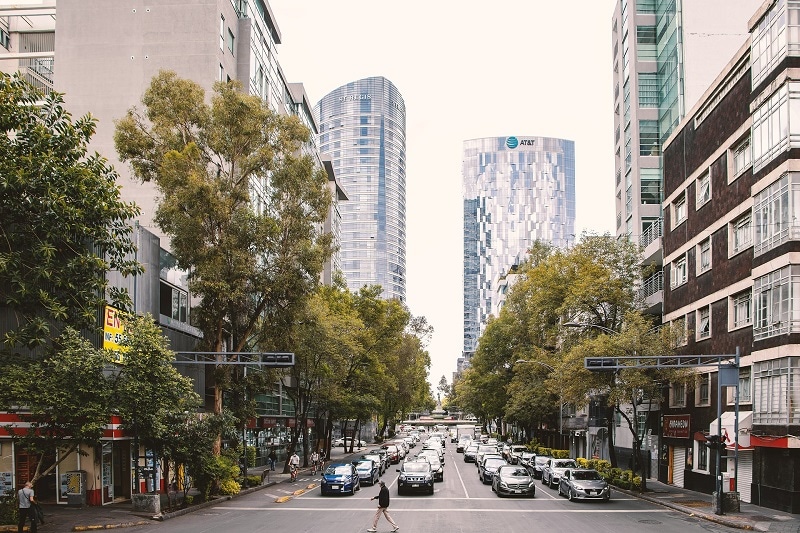
This sprawling metropolis has more to offer than any other city in Mexico in terms of job opportunities, food, and activities.
Why it’s a Top Choice: Best for Big City Lovers and Job Seekers
If you can get past the city’s air pollution and overall crowds, it’s a great place for expats to live. So, if you are a big city-lover who wants to get lost in a massive urban playground, CDMX is the place for you.
Cost of Living
Being the biggest city in the country, Mexico City is a bit more expensive than most other places. The higher cost of living boils down to the higher rent prices in CDMX.
Expats can expect to pay US$800 or more per month for a one-bedroom apartment in the central boroughs of the city. But, if you plan to live outside the city center, rent can be as low as US$400 to US$500 per month.
One thing that is considerably cheaper in CDMX than in other cities around Mexico is the cost of groceries and street food. Due to the competition from the vast number of street food vendors, you can find tacos for as little as US$2.
And because the city has countless fresh fruit and vegetable markets, you can buy groceries here on a budget. To live comfortably in Mexico City, an expat would need around US$800 to US$1,500 per month.
Job Opportunities
Mexico City is the place to be if you want to find a job in Mexico. Most large local companies and many international corporations are headquartered in CDMX, making it one of the best places to find work in Mexico.
Mexico City is the best place to find a job in fields such as tech, programming, marketing, sales, and management. As with other cities in the country, Mexico City is also a great place to teach English.
Pros of Living in Mexico City
- It has the best public transportation system in the country by a long shot. You’ll have access to the subway and commuter rails, which can get you anywhere in the city.
- It’s the best place in the country to learn Spanish, with many immersion and Spanish language schools.
- CDMX Airport is the biggest in Mexico, with many affordable connections to other cities in the country and international destinations.
Cons of Living in Mexico City
- Bad air pollution. At times, a pollution mask may be necessary.
- Very busy city. Over 20 million people live here, so it’s no surprise that the city is constantly packed.
- While it’s not as dangerous of a place as the media makes it out to be, it’s not the safest city in Mexico.
San Miguel de Allende
Around 160 miles north of CDMX lies San Miguel de Allende, a gorgeous 16th-century colonial town with fantastic weather and rich cultural history.
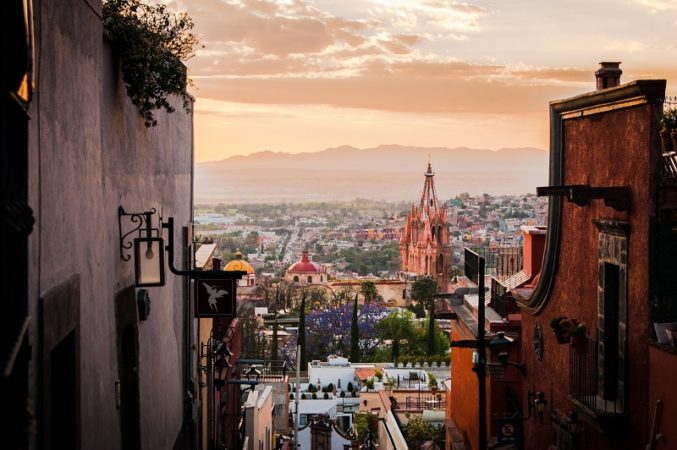
Approximately 10 percent of the population in San Miguel de Allende are expats, so it goes without saying that this city is very foreigner friendly.
San Miguel de Allende has been named the world’s most livable city several times.
Why it’s a Top Choice: Most Cultural City
This city is much smaller than some of the major centers of Mexico, with only around 160,000 residents. That being said, San Miguel de Allende is a tourist hot spot, especially popular with retirees, and the city center still gets busy and crowded in the high season.
If not being near the beach doesn’t bother you, San Miguel de Allende might be the perfect city.
Cost of Living
San Miguel de Allende is not the most expensive city in Mexico, but it is definitely not the cheapest. As a smaller city, there is more housing competition, so it’s harder to find low rental prices.
The average cost for a one-bedroom apartment in the city center is around US$750 to US$850 per month, but if you go outside the city center, you can expect to pay about US$600 to US$700 per month.
An expat living in San Miguel de Allende will need around the same amount of money as an expat living in Mexico City, around US$800 to US$1,500 per month. This may not be as cheap as a place like Merida, but it’s still affordable compared to other popular destinations in the country.
Job Opportunities
The most significant industry in San Miguel de Allende is tourism. This small city gets nearly two million visitors annually, so many locals and expats living here work in tourism and hospitality.
Many expats also move to San Miguel de Allende to work in the growing real estate market. This is a result of more and more expat retirees moving to cities across Mexico each year and investing in property.
Companies in San Miguel de Allende generally prefer to hire expats that speak both English and Spanish. Still, as long as you have at least a basic understanding of both languages, you should be able to find a job in this city.
Pros of Living in San Miguel de Allende
- The city boasts warm, dry weather all year round. The wettest month only gets two to three inches of rain.
- A very safe place to live.
- Clean city with very little air pollution or litter.
- More healthcare options (physical therapy, dental, etc.) than in other smaller cities in Mexico.
Cons of Living in San Miguel de Allende
- Tourist and expat areas of the city are quite expensive.
- The city can get very crowded and busy during weekends or on Mexican public holidays.
Playa del Carmen
Playa del Carmen is a small city in the Yucatan province, about a one-hour drive from Cancun. Playa del Carmen has some of the most beautiful beaches in Mexico, if not in the world, with white sand, turquoise water, and warm weather all year round.
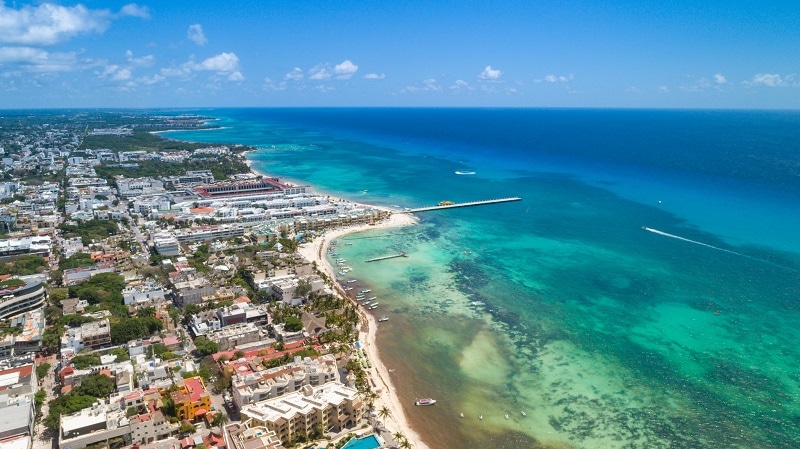
The town used to be a hidden gem that was an alternative destination to the much more popular city of Cancun, but nowadays, it’s a bustling tourist town with a constantly growing expat population.
Why it’s a Top Choice: Best City for A Laid-Back Atmosphere
So, if you want to live somewhere with amazing beaches, coral reefs, and a laid-back atmosphere, Playa del Carmen is the place for you.
Cost of Living
The one major setback anyone looking to live in Playa del Carmen will have is the cost of living. This city is very expensive to live in, especially when it comes to rent. The average monthly rental cost for a one-bedroom apartment near the city center of Playa del Carmen is US$800.
But with rent prices increasing and more and more expats moving to Playa del Carmen, it may be challenging to find an apartment for less than US$950 to US$1,000 per month.
This is one city in Mexico where you’ll find that the prices for most things cost nearly as much as they would in Western countries such as the U.S., U.K., or Australia.
My top tip for saving money in Playa del Carmen is to eat and drink local food and beverages, as they tend to be much cheaper than imported items or Western cuisine.
Job Opportunities
Most expats living in Playa del Carmen are retirees or digital nomads, so there is a smaller job market for expats in this city than there is in other cities on this list.
With that said, there are expats that work in the bars, restaurants, cafes, hotels, resorts, and other tourist establishments in Playa del Carmen. As with all other areas of Mexico, there is also a rising need for native English teachers at schools.
So, there are quite a few opportunities to work as an English teacher in Playa del Carmen, but the competition is high for these jobs in the city, so keep that in mind if you plan to apply.
Pros of Living in Playa del Carmen
- Live near immaculate beaches with some of the best snorkeling and diving in the world.
- Very easy to get around the city by walking, riding a bicycle, or taking a short (and affordable) bus ride.
- Playa del Carmen is a very safe city to live in, much safer than most other places in the country, with very low violent and petty crime rates.
- The city is very clean. Law enforcement has recently cracked down hard on littering and public urination.
Cons of Living in Playa del Carmen
- Rent is very high compared to other cities in Mexico.
- Wifi speeds are slower than the national average, so digital nomads may struggle a bit.
- Playa del Carmen frequently gets hit by hurricanes and tropical storms between June and November every year.
Lake Chapala
Lake Chapala is a large lake only around a 45-minute drive from Guadalajara. There are several towns spread around the lake, but the most popular destination for expats is Ajijic.
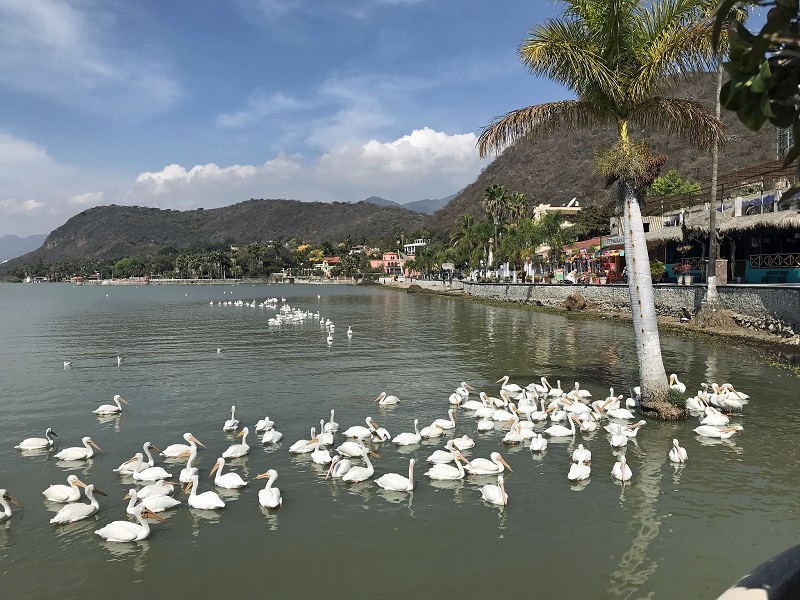
Why it’s a Top Choice: Best Hidden Gem
Ajijic is a quiet town surrounded by natural beauty, and around 20 percent of the population are expats. Most of the expats here are retirees looking to escape the hustle and bustle of large urban areas and settle in a small charming town.
Cost of Living
The cost of living in Ajijic is relatively high compared to the surrounding areas, which is mainly due to the high number of expats living here.
A comfortable, one-bedroom apartment costs around US$900 to US$1,000 per month, but rent can fluctuate from as low as US$800 to as high as US$2,000, depending on the neighborhood and facilities.
A single expat on a budget could survive on as little as US$1,100 per month here, but you’ll need US$1,700 to US$2,000 per month to live comfortably in Ajijic.
Other towns around Lake Chapala, such as Chapala, Jojotepec, and Ocatlan, tend to be much cheaper than Ajijic, with rental prices as low as US$500 per month. So, if you don’t mind being a bit off the beaten track, these towns are also beautiful locations.
Job Opportunities
Being primarily a retirement destination, Ajijic is not the best place to find work in Mexico. Most expats come here to settle quietly, so locals own most businesses.
However, quite a few restaurants and bars in the area require English-speaking staff. Expats commonly work as tour guides or real estate agents in the Lake Chapala region as well.
Pros of Living in Lake Chapala
- Best place for expats to live if you want a quiet, off-the-beaten-track location.
- The weather is mild due to the lake being located at a high elevation of 5,000 feet above sea level.
- Since over 20 percent of the population are expats, there are many comforts such as American and European food and sports bars.
- You get the small-town vibe while still only being a 45-minute drive to a large urban area.
Cons of Living in Laka Chapala
- Living in Ajijic may feel more like living in the U.S. or Canada than in Mexico because of how many expats live here. So, if you’re looking for a more authentic Mexican location, look elsewhere.
- Petty crime has gotten worse in the last few years in the Lake Chapala region, with more reported break-ins and burglaries.
Related article: Everything You Need to Know About Driving in Mexico
Now, on to You
As you can see, there are plenty of cities to live in in Mexico as an expat. Each city has its own unique charm and attracts different types of expats.
Whether you’re looking for a beach city, culture, or good food, there is a city in Mexico for you. Also, consider job opportunities and the local communities to find the perfect fit.
If you’re still unsure about what city to pick, spend some time on your top picks to really get a sense of what each city has to offer.
What to read next:




